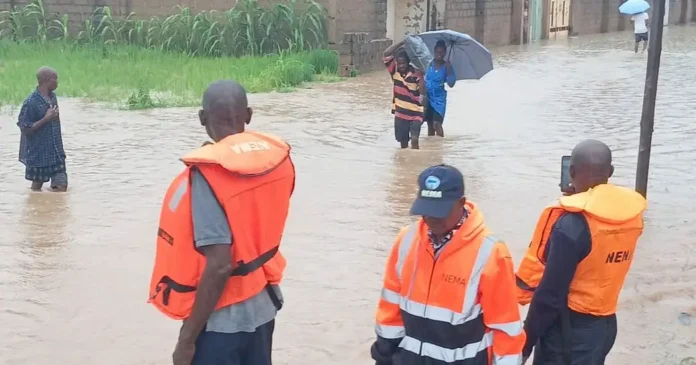The Federal Government will soon release ₦6.3 billion in interest-free loans to help 21,000 Nigerians rebuild their lives after devastating floods swept through communities across the country.
Minister of State for Humanitarian Affairs and Poverty Reduction, Dr Yusuf Sununu, announced this at a roundtable in Abuja marking the International Day for Disaster Risk Reduction.
The event drew Vice President Kashim Shettima, Deputy Speaker Benjamin Kalu, Zamfara State Governor Dauda Lawal, legislators, and international partners.
Dr Sununu said the initiative is part of efforts to cushion the effects of flooding on households and food production.
He revealed that the government has already reached 8.1 million households with over ₦300 billion through the Conditional Cash Transfer programme under President Tinubu’s Hope Agenda.
Support for Farmers and Displaced Families
“In the coming weeks, we will disburse interest-free, collateral-free loans of over ₦300,000 each to 21,000 Nigerians to help farmers recover from the effects of flooding,” Sununu said.
He also unveiled a new empowerment plan targeting displaced persons, aimed at linking agricultural production with guaranteed markets.
“In partnership with the Federal Ministry of Agriculture, we have developed a scheme where internally displaced persons will retain 30% of their produce, while the government will purchase 70%, providing cash payments to participating IDPs,” he explained.
The initiative, according to the Minister, is designed to strengthen community resilience in health, education, and livelihoods — sectors heavily impacted by repeated floods and climate shocks.
NEMA Launches New Risk Reduction Frameworks
Director General of the National Emergency Management Agency (NEMA), Zubaida Umar, described Nigeria’s growing exposure to disasters caused by climate change, conflicts, pandemics, and technological risks.
She said the country must shift from reactive disaster responses to proactive prevention and resilience-building.
Umar announced the launch of two key policy frameworks — the NEMA Strategic Plan (2025–2029) and the National Disaster Risk Reduction Strategy (2025–2030) — both aimed at promoting risk-informed development, innovative financing, and multi-sector collaboration in agriculture, energy, water, education, and health.
She said NEMA is also developing a National Risk Monitoring and Information Platform to enhance early warning systems, vulnerability mapping, and disaster investment planning.
“We must embrace innovative funding options like catastrophe bonds, insurance pools, climate funds, and blended finance to sustain long-term disaster risk reduction efforts,” she urged.
Rate, Like 👍, Comment 💬, Share this article, Follow us on our social media handles, and Submit your own story to get featured and earn rewards!







